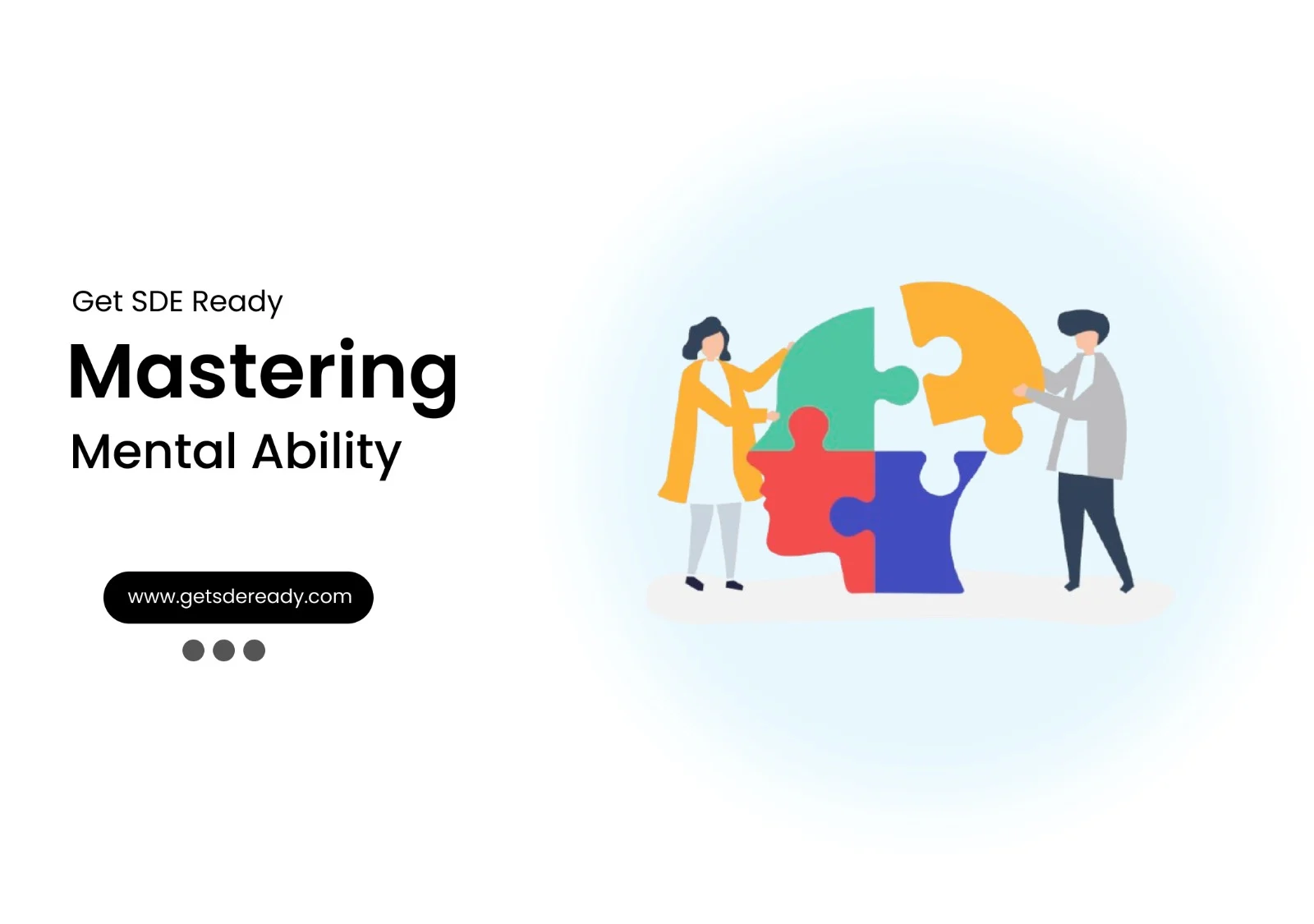Introduction to High-Level System Design
System Design Fundamentals
- Functional vs. Non-Functional Requirements
- Scalability, Availability, and Reliability
- Latency and Throughput Considerations
- Load Balancing Strategies
Architectural Patterns
- Monolithic vs. Microservices Architecture
- Layered Architecture
- Event-Driven Architecture
- Serverless Architecture
- Model-View-Controller (MVC) Pattern
- CQRS (Command Query Responsibility Segregation)
Scaling Strategies
- Vertical Scaling vs. Horizontal Scaling
- Sharding and Partitioning
- Data Replication and Consistency Models
- Load Balancing Strategies
- CDN and Edge Computing
Database Design in HLD
- SQL vs. NoSQL Databases
- CAP Theorem and its Impact on System Design
- Database Indexing and Query Optimization
- Database Sharding and Partitioning
- Replication Strategies
API Design and Communication
Caching Strategies
- Types of Caching
- Cache Invalidation Strategies
- Redis vs. Memcached
- Cache-Aside, Write-Through, and Write-Behind Strategies
Message Queues and Event-Driven Systems
- Kafka vs. RabbitMQ vs. SQS
- Pub-Sub vs. Point-to-Point Messaging
- Handling Asynchronous Workloads
- Eventual Consistency in Distributed Systems
Security in System Design
Observability and Monitoring
- Logging Strategies (ELK Stack, Prometheus, Grafana)
- API Security Best Practices
- Secure Data Storage and Access Control
- DDoS Protection and Rate Limiting
Real-World System Design Case Studies
- Distributed locking (Locking and its Types)
- Memory leaks and Out of memory issues
- HLD of YouTube
- HLD of WhatsApp
System Design Interview Questions
- Adobe System Design Interview Questions
- Top Atlassian System Design Interview Questions
- Top Amazon System Design Interview Questions
- Top Microsoft System Design Interview Questions
- Top Meta (Facebook) System Design Interview Questions
- Top Netflix System Design Interview Questions
- Top Uber System Design Interview Questions
- Top Google System Design Interview Questions
- Top Apple System Design Interview Questions
- Top Airbnb System Design Interview Questions
- Top 10 System Design Interview Questions
- Mobile App System Design Interview Questions
- Top 20 Stripe System Design Interview Questions
- Top Shopify System Design Interview Questions
- Top 20 System Design Interview Questions
- Top Advanced System Design Questions
- Most-Frequented System Design Questions in Big Tech Interviews
- What Interviewers Look for in System Design Questions
- Critical System Design Questions to Crack Any Tech Interview
- Top 20 API Design Questions for System Design Interviews
- Top 10 Steps to Create a System Design Portfolio for Developers
Introduction to High-Level System Design
System Design Fundamentals
- Functional vs. Non-Functional Requirements
- Scalability, Availability, and Reliability
- Latency and Throughput Considerations
- Load Balancing Strategies
Architectural Patterns
- Monolithic vs. Microservices Architecture
- Layered Architecture
- Event-Driven Architecture
- Serverless Architecture
- Model-View-Controller (MVC) Pattern
- CQRS (Command Query Responsibility Segregation)
Scaling Strategies
- Vertical Scaling vs. Horizontal Scaling
- Sharding and Partitioning
- Data Replication and Consistency Models
- Load Balancing Strategies
- CDN and Edge Computing
Database Design in HLD
- SQL vs. NoSQL Databases
- CAP Theorem and its Impact on System Design
- Database Indexing and Query Optimization
- Database Sharding and Partitioning
- Replication Strategies
API Design and Communication
Caching Strategies
- Types of Caching
- Cache Invalidation Strategies
- Redis vs. Memcached
- Cache-Aside, Write-Through, and Write-Behind Strategies
Message Queues and Event-Driven Systems
- Kafka vs. RabbitMQ vs. SQS
- Pub-Sub vs. Point-to-Point Messaging
- Handling Asynchronous Workloads
- Eventual Consistency in Distributed Systems
Security in System Design
Observability and Monitoring
- Logging Strategies (ELK Stack, Prometheus, Grafana)
- API Security Best Practices
- Secure Data Storage and Access Control
- DDoS Protection and Rate Limiting
Real-World System Design Case Studies
- Distributed locking (Locking and its Types)
- Memory leaks and Out of memory issues
- HLD of YouTube
- HLD of WhatsApp
System Design Interview Questions
- Adobe System Design Interview Questions
- Top Atlassian System Design Interview Questions
- Top Amazon System Design Interview Questions
- Top Microsoft System Design Interview Questions
- Top Meta (Facebook) System Design Interview Questions
- Top Netflix System Design Interview Questions
- Top Uber System Design Interview Questions
- Top Google System Design Interview Questions
- Top Apple System Design Interview Questions
- Top Airbnb System Design Interview Questions
- Top 10 System Design Interview Questions
- Mobile App System Design Interview Questions
- Top 20 Stripe System Design Interview Questions
- Top Shopify System Design Interview Questions
- Top 20 System Design Interview Questions
- Top Advanced System Design Questions
- Most-Frequented System Design Questions in Big Tech Interviews
- What Interviewers Look for in System Design Questions
- Critical System Design Questions to Crack Any Tech Interview
- Top 20 API Design Questions for System Design Interviews
- Top 10 Steps to Create a System Design Portfolio for Developers
Advanced DSA Questions for Competitive Programming
Welcome to our in-depth guide on Advanced DSA Questions for Competitive Programming. In this article, we explore cutting-edge data structures and algorithms that every competitive programmer should master. Whether you are aiming to crack a coding interview or dominate in algorithmic contests, understanding advanced DSA is crucial. For those eager to stay ahead of the curve and receive the latest course updates or even free courses, please check out our lead capture form here. We have integrated practical examples, expert insights, and external data points to ensure you gain a comprehensive understanding of the topic.
Importance of Advanced DSA in Competitive Programming
Advanced data structures and algorithms form the backbone of competitive programming. Mastering these topics not only enables you to solve complex problems more efficiently but also significantly improves your performance in coding contests and technical interviews. Competitions such as the International Collegiate Programming Contest (ICPC) and Codeforces rounds demand a high level of proficiency in DSA, and many top programmers attribute their success to continuous practice and deep understanding of advanced topics.
Competitive programming has evolved into a discipline where speed, accuracy, and innovative problem-solving are paramount. According to a study by the Association for Computing Machinery (ACM), programmers who regularly practice advanced DSA techniques solve problems up to 40% faster than those who only know basic algorithms. Experts like Steven Skiena have also noted that “an intimate understanding of algorithms transforms a good programmer into a great one.” These insights emphasize that beyond conventional coding challenges, the nuance of advanced DSA questions can be the deciding factor between winning and missing out on opportunities.
Advanced topics help bridge the gap between theoretical computer science and real-world application. They encourage you to think critically about time-space trade-offs and often involve tackling problems with non-trivial constraints. Here are some key benefits:
- Enhanced Problem-Solving Skills: Understanding advanced DSA enables a logical breakdown of seemingly insurmountable problems.
- Optimized Performance: Efficient algorithms reduce computational overhead, essential in time-limited contests.
- Versatility in Approach: Knowledge of varied data structures and algorithmic paradigms equips you to handle a wide range of challenges.
Additionally, many competitive platforms such as HackerRank and LeetCode regularly update their problem banks with questions that require advanced DSA techniques, pushing programmers to continuously adapt and refine their skills.
Also Read: Low-Level Design of YouTube Recommendations
Core Data Structures and Their Applications in Advanced DSA
A thorough grasp of core data structures is fundamental to tackling advanced DSA questions. In competitive programming, it is not only the mastery of individual data structures but also the ability to combine them creatively to optimize solutions. Let’s delve into some of the most critical structures and their real-world applications.
Trees and Graphs
Trees and graphs are ubiquitous in competitive problems. They are used to model hierarchical data, networks, and relationships among various entities.
Trees
Trees are non-linear data structures that represent hierarchical relationships. Advanced problems might involve:
- Segment Trees and Fenwick Trees: Essential for range query problems where update operations need to be efficient.
- Trie Structures: Used for string manipulation problems and autocomplete features.
Table: Comparison of Tree Data Structures
Data Structure | Operation Complexity | Best Use Case |
Binary Search Tree | O(log n) average | Ordered data and search operations |
Segment Tree | O(log n) per query | Range queries and updates |
Fenwick Tree | O(log n) per query | Cumulative frequency queries |
Graphs
Graphs represent connections between nodes. They are critical for solving problems related to networks, pathfinding, and connectivity.
- Adjacency Lists vs. Matrices: Adjacency lists are space efficient, while matrices offer faster access for dense graphs.
- Advanced Algorithms: Algorithms like Dijkstra’s, Bellman-Ford, and Floyd-Warshall are applied in weighted graphs, whereas Tarjan’s and Kosaraju’s algorithms help with strongly connected components.
Bullet Points: Key Graph Concepts
- Directed vs. undirected graphs
- Weighted vs. unweighted edges
- Cycle detection and traversal techniques
Understanding trees and graphs at an advanced level also means learning about their limitations and trade-offs. For instance, while segment trees offer excellent performance for dynamic arrays, they require careful implementation to manage memory effectively.
Heaps and Priority Queues
Heaps are specialized tree-based data structures that satisfy the heap property. They are frequently used in priority queues, which are pivotal for scheduling tasks and managing ordered data dynamically.
- Min-Heap vs. Max-Heap: Min-heaps allow quick access to the smallest element, while max-heaps are optimal for retrieving the largest.
- Advanced Usage: Implementing custom comparators for complex data types and using heaps in graph algorithms like Prim’s and Dijkstra’s.
Bullet Points: Advantages of Heaps
- Efficient extraction of minimum/maximum elements.
- Optimized for dynamic data sets where priorities change frequently.
The application of these data structures in competitive programming is supported by statistics from CodeChef’s annual report, which notes that contestants proficient in advanced data structures score, on average, 15-20% higher than their peers.
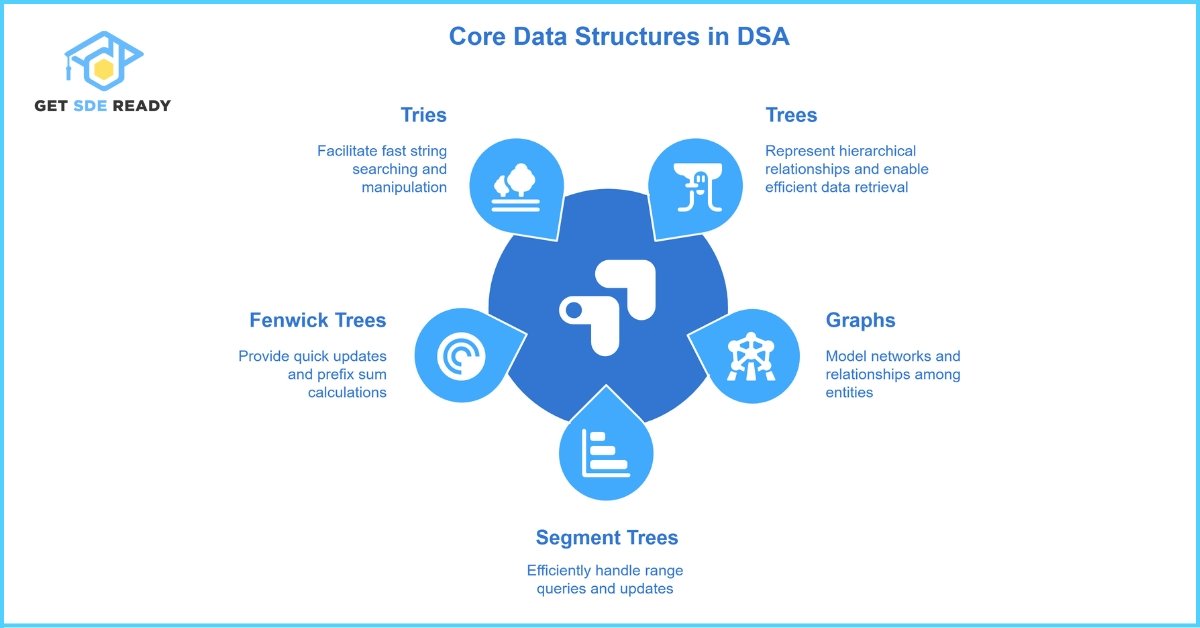
Algorithmic Techniques and Strategies for Advanced Problems
Beyond data structures, advanced algorithmic techniques are essential to solve high-level competitive programming questions. A solid foundation in these methods can be the key differentiator in your coding contests.
Dynamic Programming (DP)
Dynamic Programming is a method used for solving complex problems by breaking them down into simpler subproblems. It is particularly effective for optimization problems and is widely used in competitive programming.
Key Concepts in DP
- Memoization: Storing results of expensive function calls to avoid redundant computations.
- Tabulation: Iteratively building up solutions to subproblems.
Bullet Points: Benefits of DP
- Reduces time complexity by storing intermediate results.
- Facilitates solving overlapping subproblems.
For instance, the classic “Knapsack Problem” is best solved using DP, and experts at MIT have demonstrated that a well-optimized DP solution can improve execution time by over 50% compared to brute force methods.
Greedy Algorithms
Greedy algorithms are designed to make the optimal choice at each step, aiming for a global optimum. They are intuitive and often simpler to implement, though they do not always yield the perfect solution for every problem.
Characteristics of Greedy Algorithms
- Local Optimization: Making decisions that are immediately optimal.
- Applicability: Best suited for problems with the greedy-choice property, such as scheduling and resource allocation.
Bullet Points: Greedy Strategy Pros and Cons
- Pros: Simplicity, speed, and ease of implementation.
- Cons: May not produce the best overall solution for all problem types.
According to research published in the Journal of Algorithms, greedy approaches can be up to 30% faster than dynamic programming solutions when the problem constraints allow for it.
Divide and Conquer
Divide and Conquer is a technique that divides a problem into smaller subproblems, solves each one independently, and then combines the results. This approach is used in algorithms such as merge sort and quick sort.
Key Steps in Divide and Conquer
- Divide: Split the problem into smaller parts.
- Conquer: Solve the subproblems recursively.
- Combine: Merge the solutions of the subproblems to form the final answer.
Table: Comparison of Algorithmic Techniques
Technique | Time Complexity Impact | Ideal Problem Types |
Dynamic Programming | Reduces exponential to polynomial | Optimization problems, overlapping subproblems |
Greedy Algorithms | Linear to logarithmic improvements | Scheduling, resource allocation |
Divide and Conquer | Typically O(n log n) | Sorting, searching, and recursive problems |
Each algorithmic strategy has its strengths and is chosen based on the nature of the problem. Competitive programmers often blend these techniques to create hybrid solutions that are both efficient and scalable.
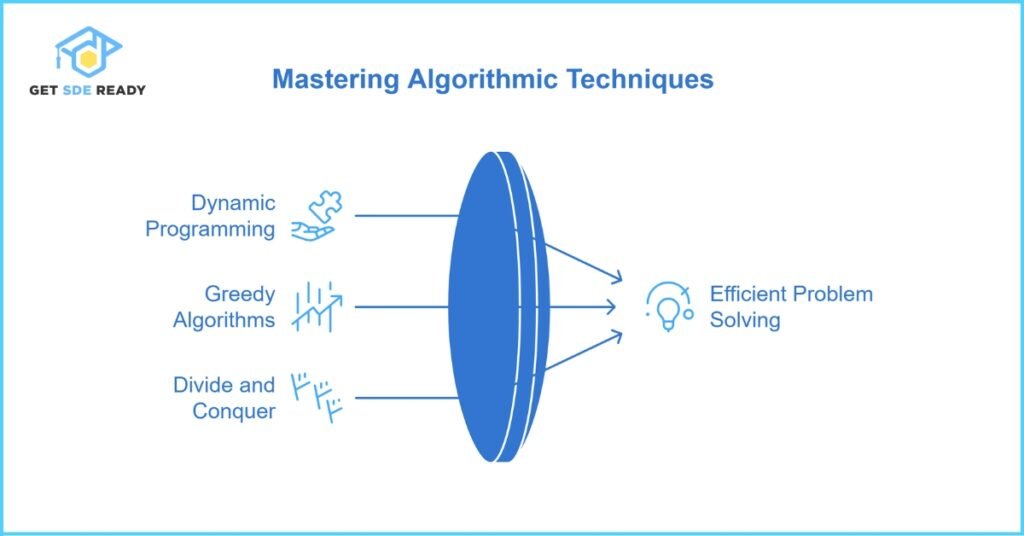
Optimizing Code for Speed and Efficiency in Competitions
When facing time-critical competitions, the ability to write optimized code is as important as understanding advanced algorithms. Code optimization ensures that your solutions not only run correctly but also execute within stringent time limits.
Code Profiling and Benchmarking
Optimizing your code starts with understanding where bottlenecks exist. Profiling tools help identify the parts of your code that require improvement.
Techniques for Profiling
- Time Complexity Analysis: Assessing loops, recursive calls, and function overhead.
- Memory Profiling: Analyzing space usage to prevent over-allocation.
Bullet Points: Common Profiling Tools
- gprof (GNU profiler)
- Valgrind
- Python’s cProfile module
A survey by Stack Overflow indicates that nearly 70% of professional developers use some form of code profiling to improve performance. Profiling not only helps in reducing run time but also guides in refactoring the code to make it more maintainable.
Advanced Optimization Techniques
Beyond basic profiling, several advanced optimization strategies can give you a competitive edge.
Techniques Include:
- Tail Recursion: Converting recursive functions into tail-recursive ones to optimize memory usage.
- In-Place Algorithms: Minimizing extra space usage by modifying data directly.
- Loop Unrolling: Increasing the loop body to reduce the overhead of loop control.
Bullet Points: Optimization Benefits
- Faster Execution: Reduced number of operations results in faster run times.
- Lower Memory Footprint: Efficient use of data structures minimizes resource usage.
Additionally, real-world examples such as the improvements seen in Google’s search algorithm demonstrate that even a 5% increase in speed can result in a massive user experience boost. Optimized solutions not only perform better under competitive pressure but also translate into industry-ready skills.
Practical Comparison: Optimized vs. Non-Optimized Code
Below is a simplified table comparing a non-optimized solution with an optimized one for a common algorithmic problem:
Aspect | Non-Optimized Code | Optimized Code |
Execution Time | High (O(n²) or worse) | Reduced (O(n log n) or O(n)) |
Memory Consumption | Excessive temporary allocations | In-place modifications, lower overhead |
Readability | Often complex and redundant | Clean, efficient, and maintainable |
Through iterative testing and benchmarking, you can fine-tune your code to meet the performance criteria demanded by top competitive platforms.
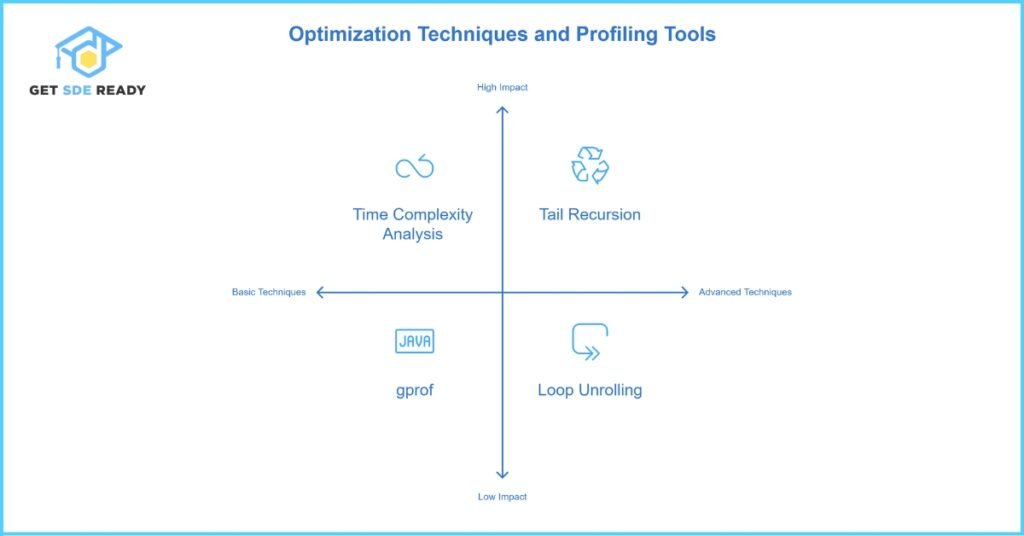
Bullet Points: Key Benefits of Regular Practice
- Improved speed and accuracy under pressure.
- Exposure to a variety of problem types and difficulty levels.
- Enhanced ability to debug and optimize on the fly.
Studies from top coding bootcamps suggest that candidates who engage in daily practice show a 25% improvement in solving complex DSA problems over a period of three months. This regular engagement not only builds familiarity with advanced questions but also instills confidence during high-stakes interviews and contests.
Resource Recommendations
Access to high-quality resources is essential for effective preparation. Explore textbooks, online courses, and interactive coding platforms that provide curated problem sets and detailed explanations.
Recommended Resources:
- Textbooks: “Introduction to Algorithms” by Cormen et al., and “Competitive Programming” by Steven Halim.
- Online Platforms: LeetCode, HackerRank, and CodeChef.
- Courses: Enroll in comprehensive courses that combine DSA with web development and system design insights.
A balanced study plan that integrates theory with hands-on coding can significantly boost your preparedness. Regularly revisiting concepts and practicing new problems ensures that you remain sharp and updated with the latest competitive trends.
Preparing for DSA Interviews and Competitive Programming Contests
Success in DSA interviews and programming contests is not solely based on technical knowledge—it also depends on preparation strategies, consistent practice, and effective time management. Building a systematic study plan can greatly enhance your problem-solving abilities.
Practice Routines and Mock Interviews
Consistent practice through competitive platforms and simulated mock interviews helps in understanding real-time pressure and managing time effectively.
Effective Practice Tips
- Daily Problem-Solving: Aim to solve at least one advanced-level problem every day.
- Peer Coding Sessions: Collaborate with fellow programmers to exchange strategies.
- Mock Interviews: Simulate real interview conditions with timed sessions and peer review.
Table: Resource Comparison
Resource Type | Advantages | Notable Example |
Textbooks | In-depth theory and comprehensive examples | “Introduction to Algorithms” by Cormen |
Online Platforms | Real-time feedback and vast problem libraries | LeetCode, HackerRank |
Courses | Structured learning paths and mentor support | Courses on https://getsdeready.com/courses/dsa/ |
The integration of multiple resource types enriches your learning experience, providing diverse perspectives and a more robust preparation strategy.
What are advanced DSA questions and why are they important in competitive programming?
Advanced DSA questions involve complex problems that require a deep understanding of data structures and algorithms. They often cover topics like dynamic programming, graph theory, and advanced sorting techniques. Mastering these questions is crucial because it enables you to solve problems more efficiently, giving you an edge in high-stakes competitions. This comprehensive understanding can directly impact your performance in coding contests and technical interviews. To further enhance your skills, you might consider exploring dedicated courses on data structures at this course.
How can I effectively prepare for advanced DSA interviews and programming contests?
Preparation involves a structured approach that includes daily practice, mock interviews, and a deep dive into challenging problems. Many experts recommend setting up a daily routine where you solve at least one complex problem, review algorithms, and participate in timed coding sessions. Additionally, studying real-world case studies and engaging with the community through coding challenges can boost your readiness. A balanced preparation strategy, incorporating both theoretical learning and practical application, is essential. For more structured learning, you may check out courses available at this course.
What role do optimization techniques play in solving advanced DSA problems?
Optimization techniques are critical for ensuring that your code runs efficiently under tight time constraints. By utilizing methods such as tail recursion, in-place algorithms, and loop unrolling, you can significantly reduce both time and space complexity. These techniques not only improve execution speed but also contribute to cleaner, more maintainable code. In competitive programming, even a slight optimization can mean the difference between a correct solution and a time-out. For further insights on optimizing code, consider exploring advanced topics in our specialized courses at this course.
How does mastering system design contribute to my career in web development?
Mastering system design is key to building scalable and maintainable web applications that can handle increased user demands. A deep understanding of system architecture not only boosts your technical expertise but also advances your career. Accelerate your learning with our specialized course at Master DSA Web Dev System Design.
Why should a web developer consider learning data science?
Learning data science equips web developers with the skills to analyze user behavior, optimize performance, and build data-driven applications. This expertise is invaluable for creating intelligent, engaging, and responsive websites. Enhance your capabilities by exploring our dedicated course at Data Science Courses.
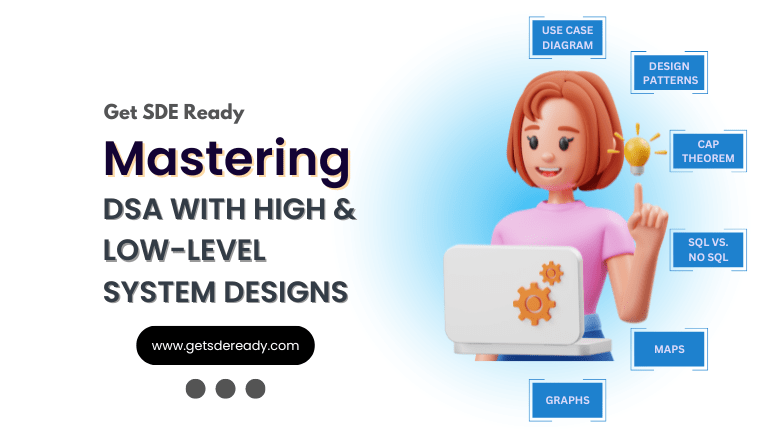
DSA, High & Low Level System Designs
- 85+ Live Classes & Recordings
- 24*7 Live Doubt Support
- 400+ DSA Practice Questions
- Comprehensive Notes
- HackerRank Tests & Quizzes
- Topic-wise Quizzes
- Case Studies
- Access to Global Peer Community
Buy for 52% OFF
₹25,000.00 ₹11,999.00
Accelerate your Path to a Product based Career
Boost your career or get hired at top product-based companies by joining our expertly crafted courses. Gain practical skills and real-world knowledge to help you succeed.
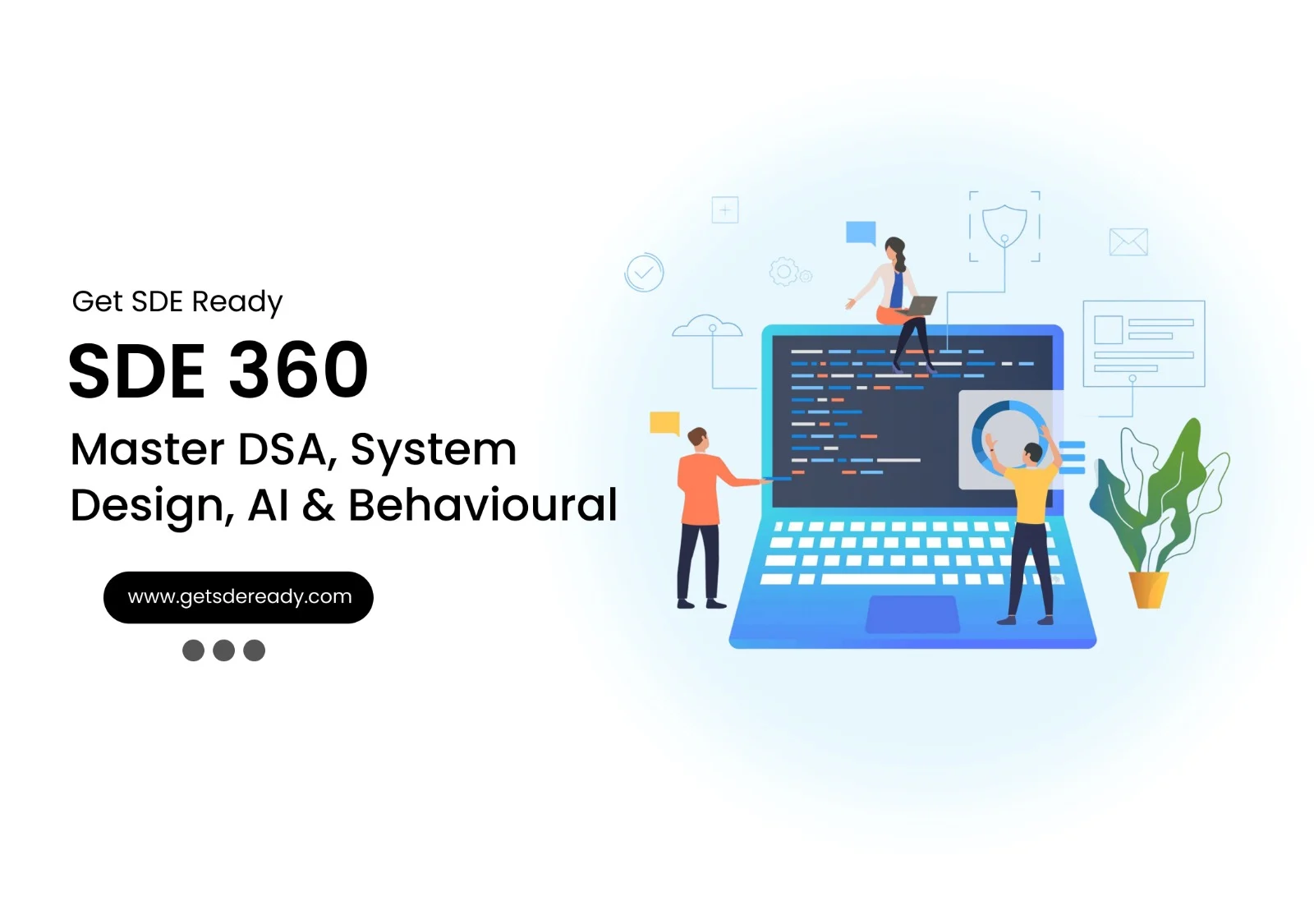
SDE 360: Master DSA, System Design, AI & Behavioural
- 100+ Live Classes & Recordings
- 24*7 Live Doubt Support
- 400+ DSA Practice Questions
- Comprehensive Notes
- HackerRank Tests & Quizzes
- Topic-wise Quizzes
- Case Studies
- Access to Global Peer Community
Buy for 50% OFF
₹39,999.00 ₹19,999.00

DSA, High & Low Level System Designs
- 85+ Live Classes & Recordings
- 24*7 Live Doubt Support
- 400+ DSA Practice Questions
- Comprehensive Notes
- HackerRank Tests & Quizzes
- Topic-wise Quizzes
- Case Studies
- Access to Global Peer Community
Buy for 52% OFF
₹25,000.00 ₹11,999.00
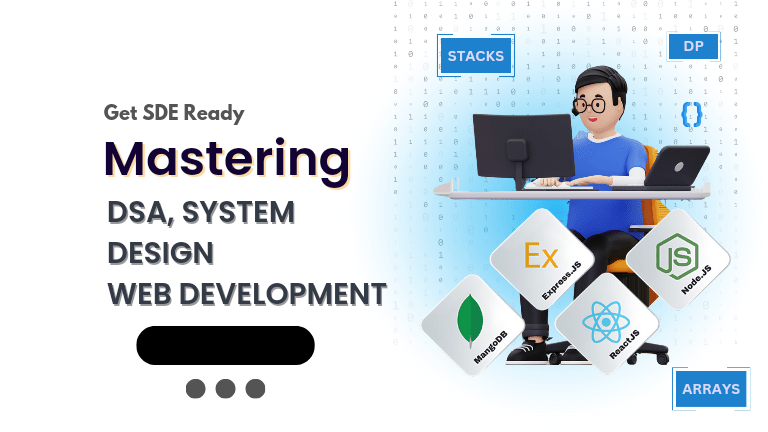
Fast-Track to Full Spectrum Software Engineering
- 120+ Live Classes & Recordings
- 24*7 Live Doubt Support
- 400+ DSA Practice Questions
- Comprehensive Notes
- HackerRank Tests & Quizzes
- 12+ live Projects & Deployments
- Case Studies
- Access to Global Peer Community
Buy for 51% OFF
₹35,000.00 ₹16,999.00

Low & High Level System Design
- 20+ Live Classes & Recordings
- 24*7 Live Doubt Support
- Case Studies
- Comprehensive Notes
- HackerRank Tests
- Topic-wise Quizzes
- Access to Global Peer Community
- Interview Prep Material
Buy for 60% OFF
₹20,000.00 ₹7,999.00
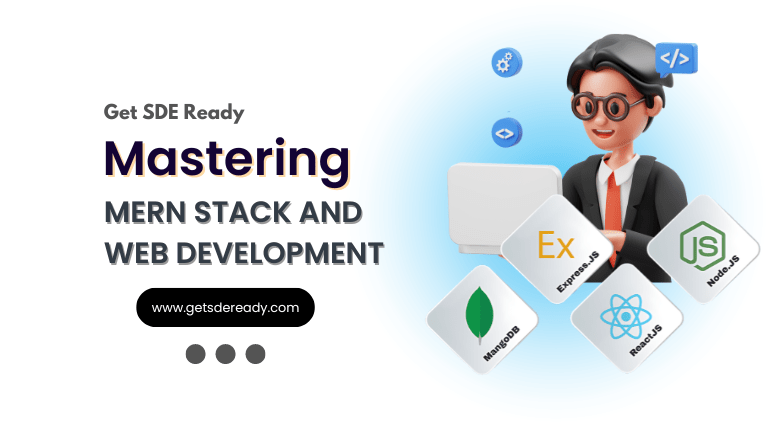
Mastering Mern Stack (WEB DEVELOPMENT)
- 65+ Live Classes & Recordings
- 24*7 Live Doubt Support
- 12+ Hands-on Live Projects & Deployments
- Comprehensive Notes & Quizzes
- Real-world Tools & Technologies
- Access to Global Peer Community
- Interview Prep Material
- Placement Assistance
Buy for 53% OFF
₹15,000.00 ₹6,999.00
Reach Out Now
If you have any queries, please fill out this form. We will surely reach out to you.
Contact Email
Reach us at the following email address.
arun@getsdeready.com
Phone Number
You can reach us by phone as well.
+91-97737 28034
Our Location
Rohini, Sector-3, Delhi-110085
